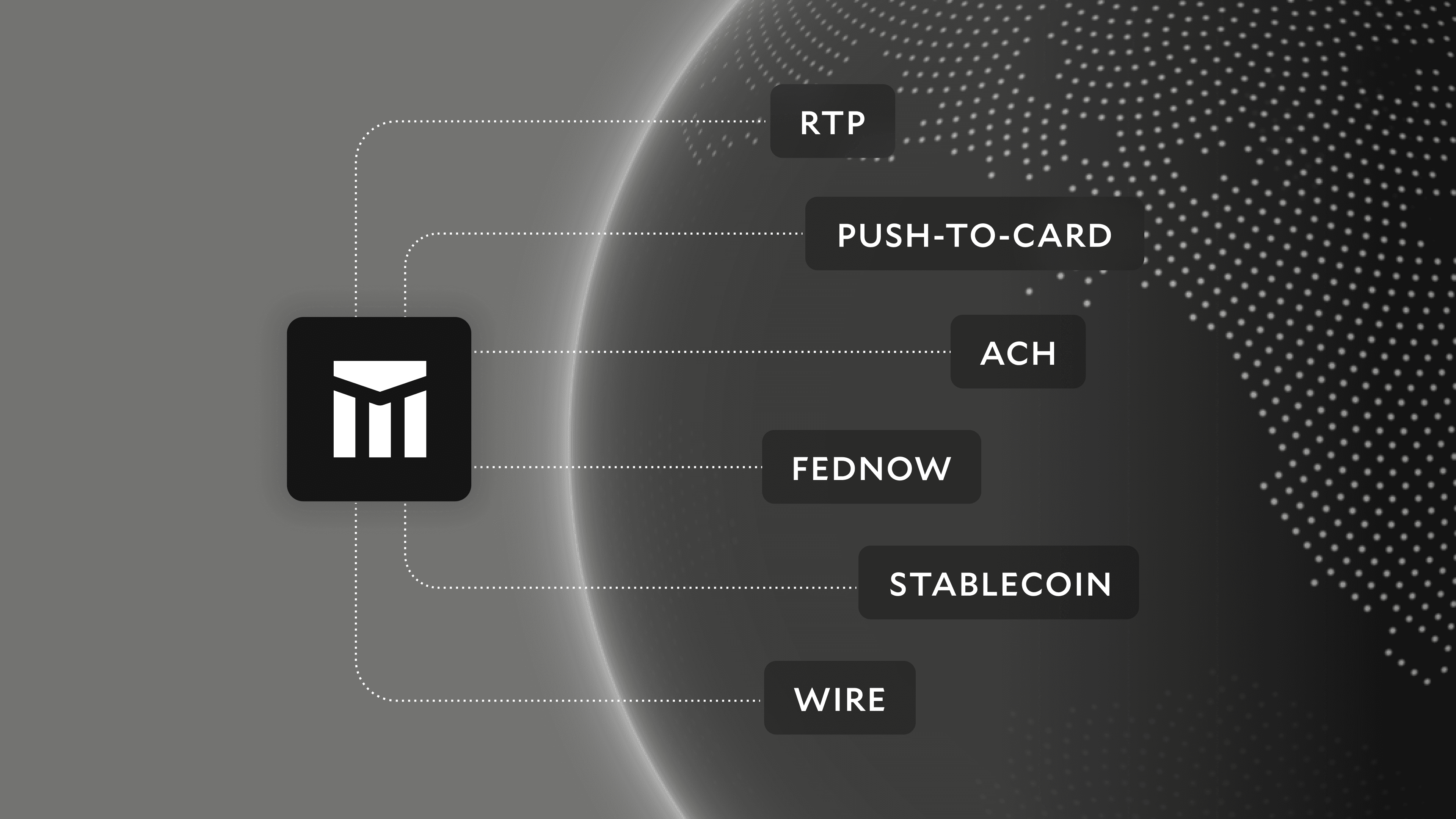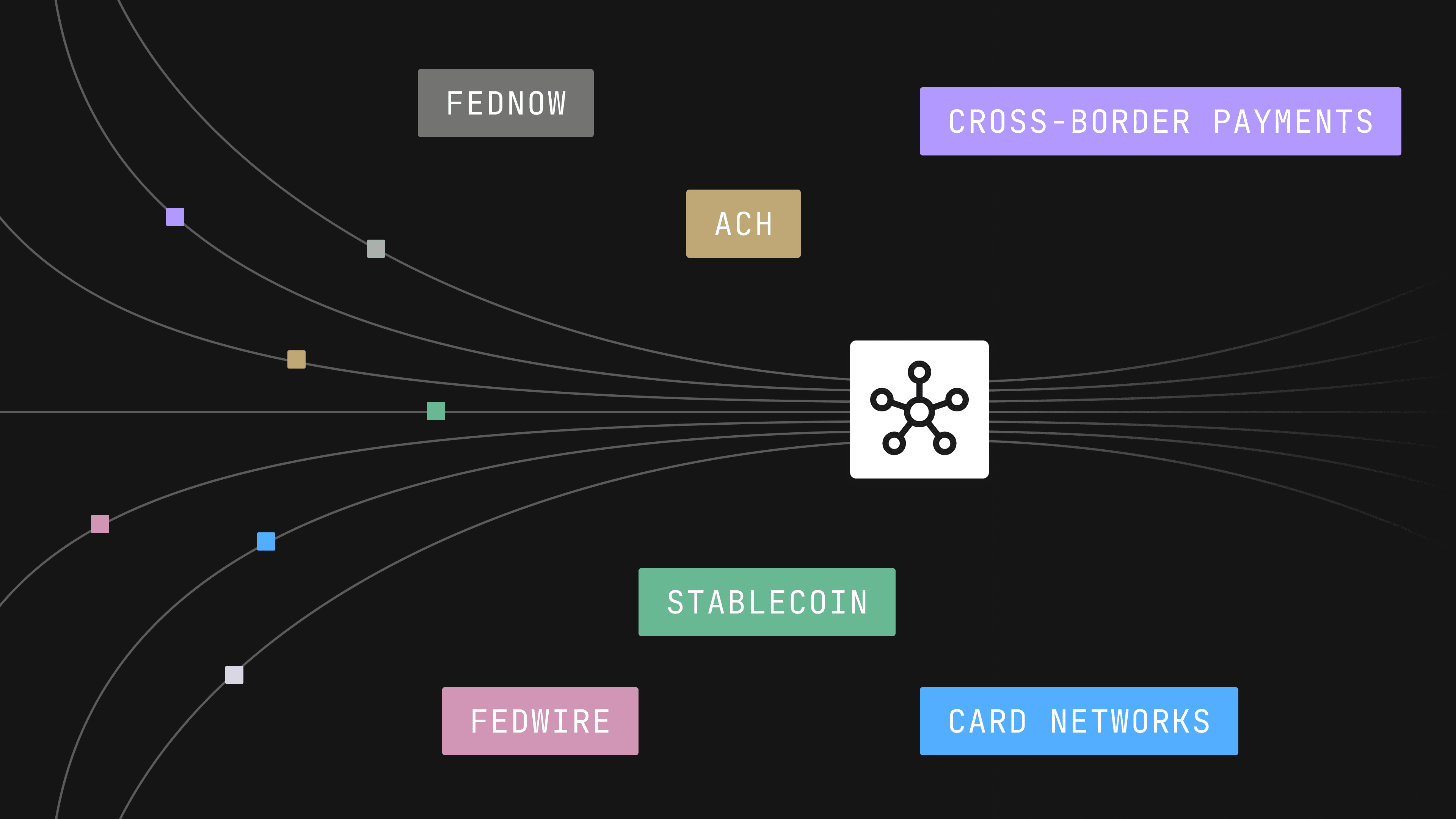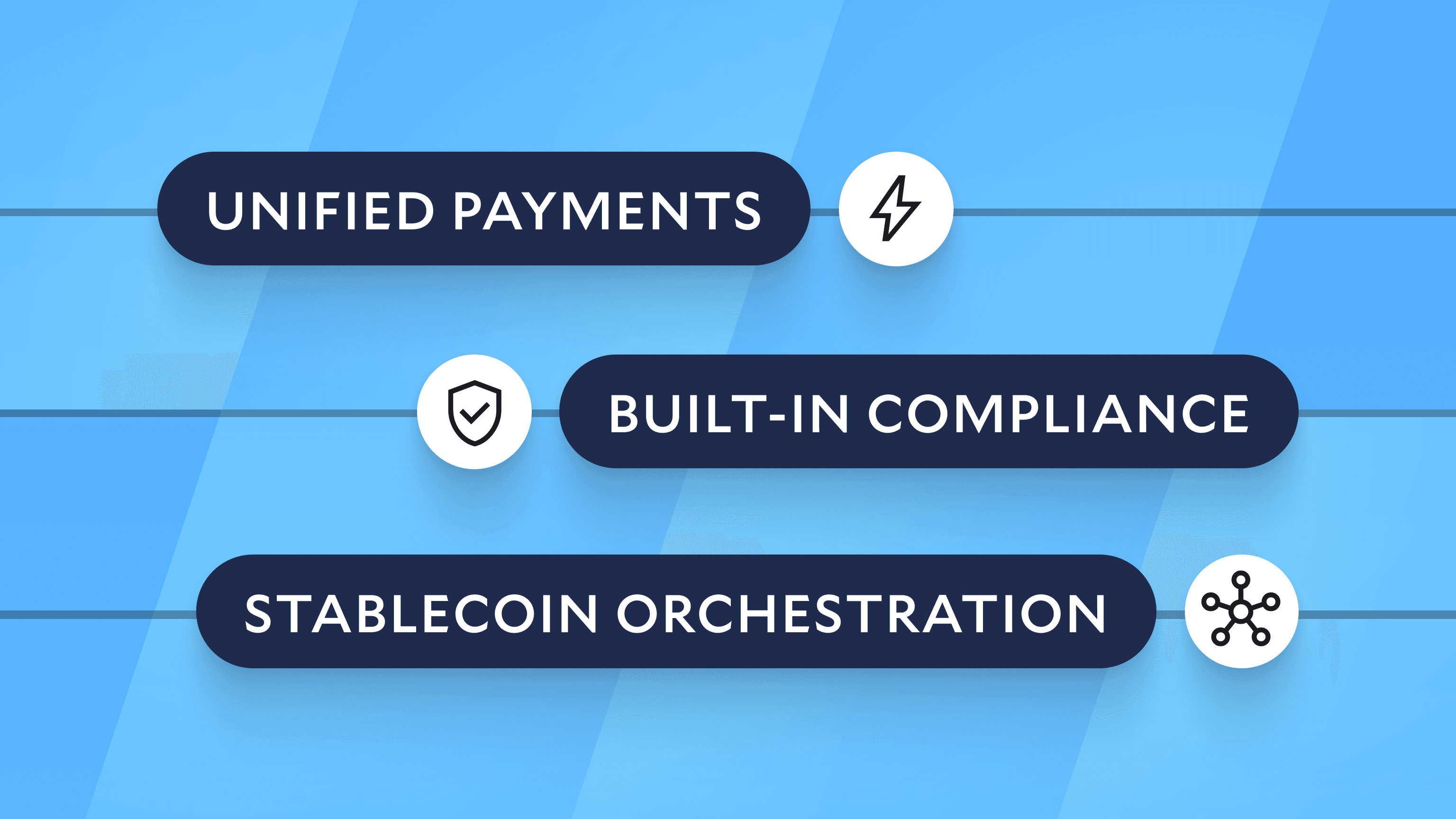Modern Treasury and Paxos Make It Easier for Businesses to Move Money with Stablecoins.Learn more →
How Modern Treasury Can Support Banks
With the internet providing increasingly new ways to distribute and interact with financial products, the banking industry is losing ground to new fintech entrants. Modern Treasury can provide the software to help banks compete. In this journal, we take a look at the opportunity that exists for us to work better together.

We've written a lot recently about how Modern Treasury and banks can work better together by capitalizing on our strengths: a modern operating system for payment operations plus large scale and robust relationships provides the proverbial rising tide that lifts both boats while helping our mutual customers. In this journal, we take a look at the vast opportunity that exists for us in the current environment.
The Financial Services Industry is Changing Rapidly
Jamie Dimon didn’t mince words: “Absolutely, we should be scared shitless about [fintech].” [1]
After years of simmering tension, banks and their non-bank competitors (e.g., Tech and fintech) are colliding head-on. “The competition is going to be brutal,” said Dimon. “You should expect to see some winners and lots of casualties.” [2]
At the moment, the banking industry is losing this battle [3]. Banks have become a smaller player in the US financial system as profits and products have been intermediated or, in some cases, siphoned out of the industry by non-bank providers, such as PayPal, Stripe, Square, Apple, Apollo, Rocket and others. Bank closures and defensive mergers continue at a precipitous clip.
Meanwhile, non-banks disruptors continue to broaden their markets and product roadmaps. $130 billion was invested in fintech in 2021 alone, providing these firms with plenty of capital, runway, and investor signal about who the future of financial services could belong to.
Internet Disruption
The internet unlocked new ways to distribute and interact with financial products. It created needs in the market and opportunities for disruptors to address these needs with digital tools and business models. Within payments, there have been a few notable phases of disruptive innovation:
- Phase I (2000): Internet commerce created the need for simple, safe payment acceptance. This opened up an opportunity for non-bank providers, such as PayPal ($84b) to develop digital fraud solutions.
- Phase II (2009 - 2013): The internet created the need for seamless payment acceptance. This created the opportunity for non-bank providers, such as Square ($33b) and Stripe ($95b) to on-board merchants efficiently.
These innovations have scaled. In the process, they’ve shifted the competitive landscape. As bank execs acknowledge: 20 years ago, banks competed almost exclusively with each other; now, they compete with companies across tech, finance, even retail.
Fintechs, for example, have targeted core banking businesses with innovative, and adaptive offerings. Moreover, as client preferences continue to evolve, banks’ advantages—their relationships, scale, profitability, and brand—are undermined by their weaknesses, their technology, software, speed, and convenience.
Clay Christensen, the author of Disruption Theory, wrote in The Innovator's Solution [4]:
“Disruptive innovation…pulls customers out of the mainstream value network into a new one because customers find it more convenient to use the new product.”
One can see this today. “Why spend months setting up payment facilitation through your bank, when you can sign-up instantly through Stripe?” The pace of innovation has widened this gap and has made these trade-offs more evident.
The Emergence of Software-Integrated Payments
In the last decade, we've entered a new phase of payment innovation: software-integrated payments. Software developers are embedding payments within their applications to create more compelling, stickier products. Vertical business software platforms, digital marketplaces, gig-economy platforms, broker-dealers and investment platforms, and digital lenders all integrate payment capabilities as part of their products. Payments, once a standalone product, now begins and ends in software.
Like previous payment innovations, software-integrated payments have their own distinct characteristics and needs. A few examples:
- They are high-volume payments. This requires coded business logic so that payments can be initiated programmatically through the bank’s APIs or SFTP channels.
- Software-integrated payments require advanced tooling for payment tracking, real-time reconciliation, and product ledgers as a source of truth.
- Lastly, software-integrated payments depend upon software to guide the end-to-end payment workflow—everything from compliance, user-onboarding, counterparty management, checkout, reconciliation, and more.
In sum, software-integrated payments have needs beyond the payment itself. They require packaged software tooling and workflows that govern the complete payment journey.
Many banks, however, are still offering a “discrete payment experience” rather than a comprehensive solution that addresses the needs of their most dynamic clients and prospects. As a result, they risk opening opportunities for further disruption.
To an extent, this is happening already. Speaking with companies about their payment needs, we’ve discovered that companies with software-integrated payments face the same challenges and, in many cases, a similar choice: either build complex, undifferentiated software infrastructure to support their own payments experience, or—if their business model allows— outsource to a non-bank provider that has built this software infrastructure for them.
Despite the benefits of a direct bank relationship—the strong relationships, the deep expertise, the breadth of products and services, the platform ownership that only a direct bank relationship can afford—companies are increasingly opting for speed and convenience.
Software’s Impact on Financial Services
In the future, we expect that most digital payments will begin and end in software. Software-integrated payments volumes are growing roughly 35% per year—4x the growth of the payment industry as a whole (8%) [5]. In 2021, ACH network grew by 8.7% on a base of 31 billion payments, roughly 2.3 billion ACH payments [6].
Additionally, integrated payments are a beachhead to other financial services. In the past, a company might select their bank’s payment product, and then bundle lending and corporate banking services, financial services are now often delivered by software applications.
Global Payments reported that 60%-70% of new merchant sales come from software channels [7]. These channels have become a crucial entry point into an array of ancillary financial services, such as invoicing, payroll, capital, BNPL, analytics, and more. “Acquire the merchant once, sell the merchant many times,” writes Credit Suisse [8].
New entrants have also developed sophisticated offerings. Adyen approaches clients as a holistic software offering, providing business solutions for onboarding tools, reporting, issuing, capital, FX payments, even SAP and Salesforce plugins. Stripe has expanded into a “Global Payments and Treasury Network.” Its products span entire business workflows, including onboarding, compliance, checkout, capital, issuing, bank accounts, data aggregation, invoicing, billing, tax, and data pipelines.
Better Together: Modern Treasury + Banks
At Modern Treasury, we’ve built a network to serve both banks and clients. We help clients seamlessly integrate, and scale money movement within their applications. We help our bank better serve these clients, and others like them, by providing complementary software. Together, we create an integrated solution that addresses the needs of high-growth companies.
For banks, we’re better together. We offer the software, so that you can focus on winning and growing client relationships.
Reach out to the Banks Team at banks@moderntreasury.com to learn more.
Jamie Dimon writes in his annual letter: “The role of banks in the global financial system is diminishing”
- Banks’ size and market cap (U.S. global systemically important bank [G-SIB] market cap is $1.5 trillion) have dramatically diminished relative to their nonbank competitors.
- U.S. banks’ loans in an 11-year period have only grown 65% and now represent only 8% of total U.S. debt and equity markets, down from 11% in 2010.
- Banks’ share of mortgage originations has gone from 91% to 32%.
Clay Christensen, Innovator's Solution: Creating and Sustaining Successful Growth







